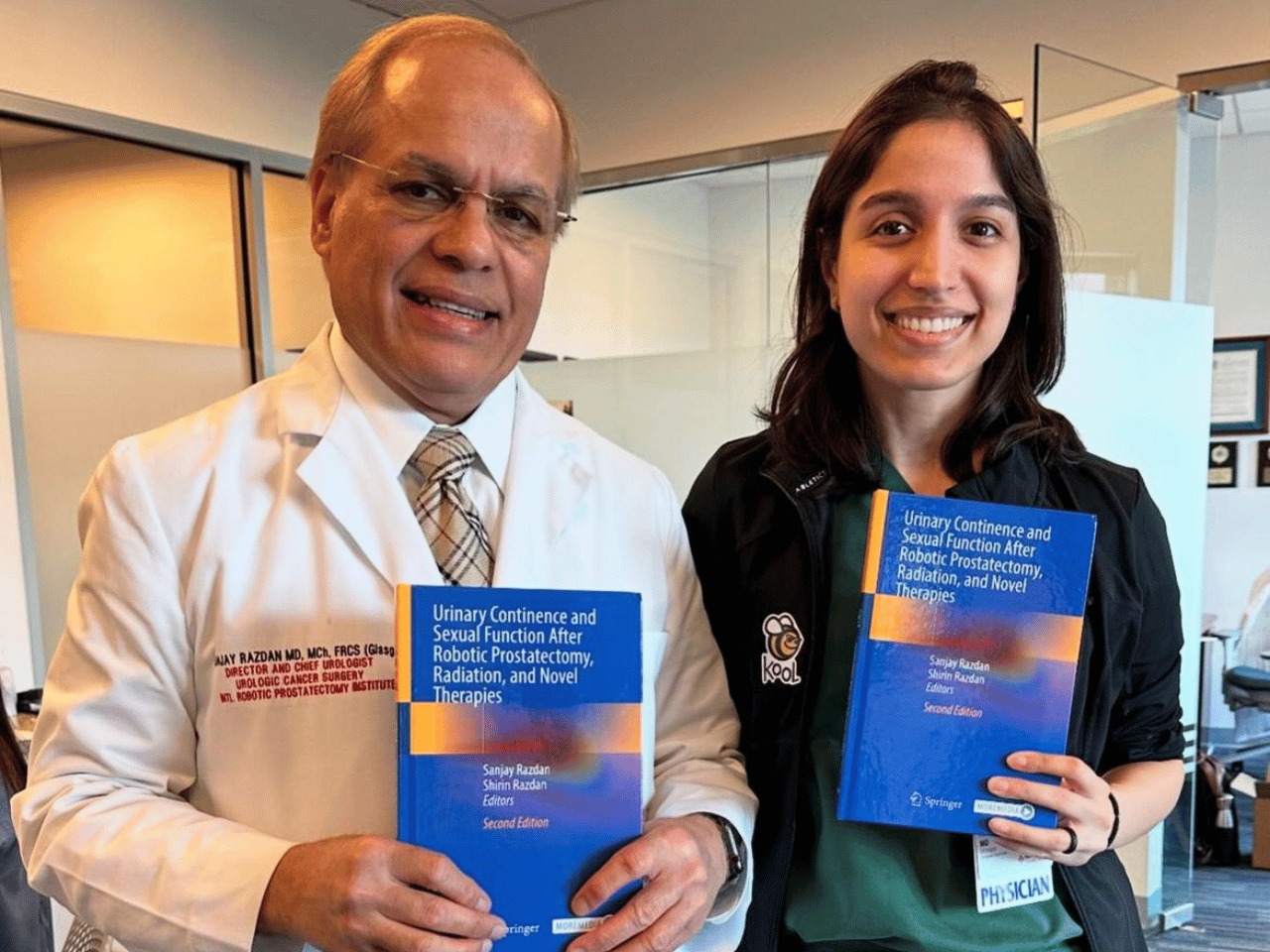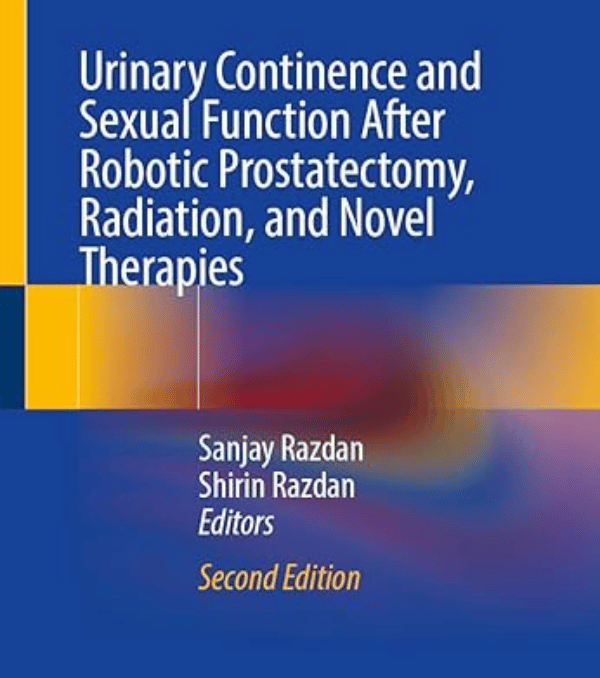
This book represents the second edition to our series examining functional outcomes after prostate cancer treatment. Our first edition, published in 2016, was titled Urinary Continence and Sexual Function After Robotic Radical Prostatectomy and featured chapters written by the world’s premier robotic prostate surgeons on how to optimize outcomes post robotic prostatectomy (RALP). Now almost 8 years later, with a lot more data and techniques described in the literature, we present our new textbook titled Urinary Continence and Sexual Function After Robotic Prostatectomy, Radiation, and Novel Therapies. In this edition, we go beyond RALP and delve into outcomes post radiation, brachytherapy, and focal therapy as well.
Over time we realized that the future of prostate cancer care is in precision medicine. With novel tools, technologies, and therapies in practice, we owe it to our patients and our colleagues to effectively discuss all the available treatment options and their ramifications. Optimizing outcomes is not simply radical extirpation of tumor, but rather taking both patient and tumor factors into consideration to devise a treatment plan that is most beneficial in terms of cancer cure and functional outcomes of continence and erectile function.
Our book is divided into 13 chapters. Since the foundation of all prostate-related treatment is in the intricate neurovascular anatomy of the pelvis, we begin our book with a thorough discussion of the anatomy of the prostate, the cavernous nerves, the urethral sphincter complex, and the supporting musculofascial layers. The book then continues with preoperative assessment of prostate cancer and methods to optimize urinary continence and erectile function prior to treatment. Subsequent chapters detail intraoperative and postoperative techniques to improve functional outcomes, including a chapter and video accompaniment on salvage RALP and other challenging clinical scenarios in RALP. We conclude the book with a discussion on radiation therapy and focal therapy for prostate cancer, and their effects on erectile function and urinary continence. Finally, the closing chapter is on the future of prostate cancer care, with an overview of precision prostatectomy, artificial intelligence, and targeted immunotherapy options for patients.
It is a great honor to serve as co-editor of this book that my father brought to fruition for the first time many years ago. Through residency and fellowship, I have seen the dynamics of prostate cancer diagnosis and treatment change. Patients are more well-informed and asking incisive questions regarding their individual oncological risks and treatment-specific outcomes. As such, we strove to expand upon our prior work to address these new patient-specific concerns, while still maintaining the core ethos of our book: maximizing functional outcomes regardless of treatment modality. We invite readers to delve into our book as we believe there is something for to take away for urologists in every stage of their career.
All our best,
Shirin Razdan, MD
Sanjay Razdan, MD, MCh, FRCS (Glasg)


